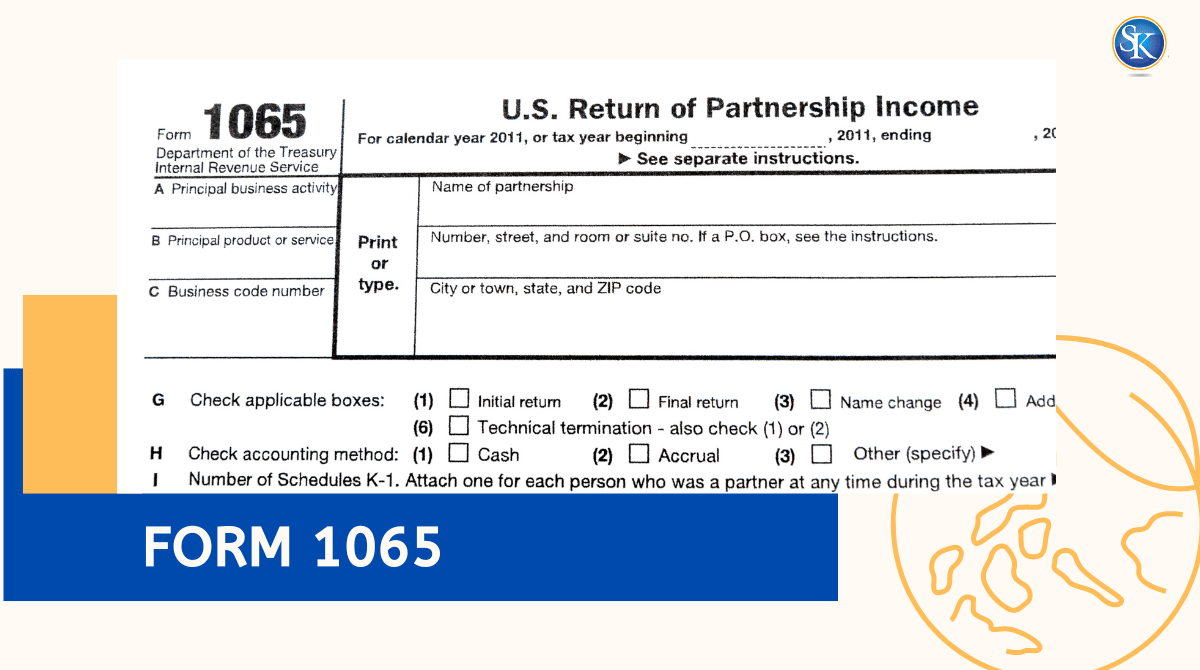
Form 1065: Partnership Income Tax Return : Who Needs to File?
Form 1065 is the partnership tax return. Partnerships don’t pay income tax at the entity level profits/losses pass through to the partners via Schedule K-1, and partners report them on their own returns. You must file Form 1065 if you operate as a partnership or an LLC taxed as a partnership, even with little or no income.
What is Form 1065?
Form 1065 is the U.S. Return of Partnership Income. It reports the partnership’s income, deductions, credits, assets, and liabilities. The IRS uses it to match each partner’s Schedule K-1 to their personal return, making sure everyone picks up their share.
Here you can find information about all tax forms
Who Must File (and Who Doesn’t)
Must file (typical cases):
-
General/limited partnerships
-
Multi-member LLCs taxed as partnerships
-
Foreign partnerships with U.S.-source income
-
501(d) religious/apostolic organizations
Usually don’t file 1065:
-
Single-member LLCs (file Schedule C with Form 1040, unless elected otherwise)
-
C-corps/S-corps (file 1120/1120-S)
-
Partnerships that made an S-corp election (then file 1120-S)
Note: Even with no income, most partnerships still file 1065 to report expenses and issue K-1s.
When Is Form 1065 Due?
-
Due date: The 15th day of the 3rd month after the tax year ends (March 15 for calendar-year partnerships).
-
Extension: File Form 7004 for an automatic 6-month extension.
The extension delays the return, not partners’ estimated taxes.
What Form 1065 Includes
-
Basic Info: Name, address, EIN, start date, and whether the return is initial/final/amended.
-
Income: Gross receipts, cost of goods sold, other income (interest, rents, gains).
-
Deductions: Salaries/wages, rent, taxes & licenses, interest, depreciation, and overhead.
-
Schedule K: The partnership’s summary of income, deductions, credits, and items that pass through.
-
Schedule K-1 (for each partner): Each partner’s share of income/loss, deductions, credits, and capital detail.
-
Balance Sheets (Sch L): Beginning/ending assets, liabilities, and partners’ capital.
- Reconciliations (Sch M-1/M-2): Book-to-tax differences; analysis of partners’ capital.
Find here: Top accounting and bookkeeping services in FL, US
Step-by-Step: How to File Form 1065
1) Gather records
Collect financials: P&L, balance sheet, depreciation, loan schedules, prior-year return, partner agreements.
2) Complete core pages
Enter income and deductions accurately. Attach COGS if applicable.
3) Fill Schedule K
Summarize items that pass through (ordinary income, interest/dividends, Section 179, credits).
4) Prepare K-1s
Allocate each partner’s share per the partnership/LLC agreement. Include capital and basis info.
5) Attach statements & schedules
Include Schedules L/M-1/M-2 if required, plus any supporting statements (e.g., fixed assets).
6) File & deliver
E-file the 1065. Distribute K-1s to partners so they can file personal returns on time.
Who Needs to File Form 1065?
All domestic partnerships must file Form 1065. This includes general partnerships, limited partnerships, and limited liability companies (LLCs) treated as partnerships for tax purposes. Additionally, foreign partnerships with income connected to U.S. sources and nonprofit religious organizations classified as 501(d) entities must also file this form. The IRS requires this form to understand each partner's share of the partnership's financial activities.
Filing Form 1065 is mandatory for any partnership that conducts business or has income within the United States. This requirement applies regardless of the partnership's size or the amount of income earned. Even if a partnership has no income, it must file Form 1065 to report any deductions or credits. This comprehensive reporting ensures that the IRS has a complete picture of the partnership's financial activities, facilitating accurate tax assessments.
Penalties You Can Avoid
-
Late 1065 filing: $220 per partner, per month (up to 12 months).
-
Late or missing K-1s: Additional penalties apply.
-
Name/TIN mismatches: Can trigger IRS notices and backup issues for partners.
Common Mistakes to Avoid
-
Wrong allocations or missing special allocations per the agreement.
-
Partner info errors (name/EIN/SSN mismatch) causing notices and delays.
-
Forgetting K-1s or sending them late.
-
Skipping M-1/M-2 when required.
-
Treating a single-member LLC like a partnership (file Schedule C unless you elected otherwise).
Benefits of Filing Form 1065 Correctly
Compliance
Filing accurately ensures that the partnership remains in good standing with the IRS and avoids penalties. Compliance with tax laws is essential for maintaining the partnership's legal and financial stability.
Transparency
Provides partners with clear insights into their shares of the partnership's income and expenses, aiding in effective decision-making and financial planning. Transparency in financial reporting builds trust among partners and supports informed business decisions.
Tax Benefits
Properly reporting income and deductions can help partners maximize their tax benefits and reduce their overall tax liability. Accurate reporting allows partners to take advantage of tax deductions and credits, minimizing their tax burden.
FAQs
Who must file Form 1065?
Partnerships and multi-member LLCs taxed as partnerships.
Do single-member LLCs file 1065?
No generally file Schedule C with Form 1040 (unless you elected corporate/S-status).
When is Form 1065 due?
March 15 (calendar-year). File Form 7004 for a 6-month extension.
Does the partnership pay the tax?
No. Income passes through to partners via K-1.
What happens if we file late?
Penalty is $220 per partner, per month (up to 12 months), plus K-1 penalties.
Do we file 1065 with zero income?
Usually yes especially if you had expenses or need to issue K-1s.
What are Schedules K and K-1?
K summarizes pass-through items; K-1 shows each partner’s share.
Can we get an extension?
Yes Form 7004 grants 6 months. Partners still handle taxes on time.
Follow SKFinancial on Facebook / Twitter / Linkedin / Youtube for updates.












